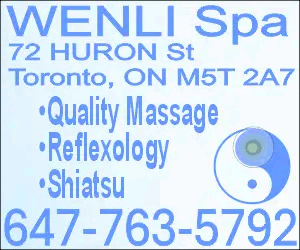
Trust Marandure
In the early 1800s, Per Henrik Ling, a Swede, is said to have discovered perhaps what many others had already learned in past centuries: massage is critical for healing pain.
Massage techniques, a system developed by Ling was inspired by the massage tradition of the Chinese. Using a few simple techniques and strokes, you can learn how to do a whole-body massage, designed especially to be practised at home. Ideas are given for massaging babies, elderly people, even yourself. Learning how to massage can be a highly pleasurable and sensual experience.
The sense of touch is a powerful and highly sensitive form of communication. It is a natural reaction to reach out and touch, whether to feel the shape or texture of something, or respond to another person, perhaps by comforting them. A mother cuddles her baby, family pets are stroked, sexual partners caress, and if we accidentally knock a limb we instinctively ‘rub it better’. Fortunately, we are now rediscovering the healing power of massage and other touch therapies which have been understood in other cultures for thousands of years.
The Development of Massage
History shows that although the early Egyptians made references to the benefits of massage, the Chinese were among the first to recognise its healing value at around 3000BC. Roman and Greek philosophers and physicians prescribed it both for its restorative powers after battle and for general preservation of the body and mind. Although the Romans believed in its curative powers, the art of massage also became part of a daily ritual for relaxation. After bathing, oils would be used to anoint the body from the head to toe, followed by a luxurious massage.
Herbalists throughout history have used massage to heal body and soul, both by applying balms and by laying their own hands on the afflicted to expel evil spirits and clear the mind. It was not until the eighteenth and nineteenth centuries, though, that massage became popular throughout Europe, thanks to the work of Per Henrik Ling [1776-1839]. Ling was a Swede who travelled to China and returned with a detailed insight into their massage techniques. From these he developed his own system of massage based on a variety of movements, involving pressure, friction, vibration and rotation.
This wealth of practical knowledge soon spread, and medical and non-medical professions worldwide began exploring the benefits of massage. This eventually established the basis of massage today, which in many ways remains much the same now as those early Swedish techniques.
Along with basic massage we are now experiencing a revival of interest in many of the ancient arts which place such great importance on touch. These include aromatherapy, reflexology and shiatsu – all distinctive natural therapies which have a specific role to play in “alternative” health-care and are described in this book.
Effects Of Massage
Massage can stimulate and relax the body and the mind. The skin, blood and lymphatic systems are stimulated, which boosts circulation, aids cellular renewal and removes toxic wastes. As tense muscles relax, stiff joints loosen and nerves are soothed, and all-over feeling of relaxation and well-being comes about.
The Nervous System
The nervous system is a highly complex network which relays messages from the brain to the rest of the body. The part of the nervous system which regulates many physiological functions leaves the brain at the base of the skull and runs down the spinal cord, protected by the spine’s bony vertebrae. Millions of nerve endings run throughout the body, controlling much of the way it functions. Depending on the depth of the massage movements used, the nerve endings can be stimulated or soothed.
The Skin
With massage comes an increase in blood circulation. This helps the exfoliation of superficial dead skin cells, tones the skin and encourages its renewable process. Massage helps maintain the collagen fibres, which give skin its elasticity and strength, and keep wrinkles at bay. The activity of the sweat and sebaceous glands, which lubricate and moisturise the skin, is regulated.
Muscles
With the increase in blood flow, the blood’s vital nutrients circulate more efficiently. Massage is popular with sportsmen and women because it can improve muscle tone, restore mobility, and ensure the elimination of waste products after exercise. With regular massage, strains and sprains heal more rapidly, while calf cramps and stiff muscles can also become a thing of the past. Massage before and exercise session will help loosen and warm up the muscles, or afterwards it will ease so, aching limbs.
Circulation and lymphatic system
By dilating the blood vessels, massage increases the blood circulation. A good circulatory system means that an efficient supply of the blood’s constituents, including oxygen and nutrients, reaches the billions of individual cells. This is vital for the healthy functioning of the whole body, from the muscles to internal organs such as the kidneys and liver.
At the same time the increase in blood circulation helps accelerate the lymphatic system, which absorbs and eliminates waste substances. Unlike the blood circulation, which has the heart to pump it around, the lymphatic system has no pump of its own and is dependent on muscular action for its efficiency. Massage is an important means of speeding up the flow of the lymph, encouraging a more effective filtering and elimination of waste throughout the body. An efficient lymphatic system provides the body with a strong immune system to fight against infections and disease.
Digestion
Massage mobilises the digestive system so that the processes of assimilation and elimination are improved, helping problems like constipation and flatulence. The digestive system is quick to respond to stress, and the deduction in anxiety and tension which comes with regular massage has a regulating effect on the digestion.
About the writer: Trust Marandure is a naturopathy practitioner based in Bulawayo. He can be contacted on 0772482382 or email :[email protected]
Let's block ads! (Why?)











































































































